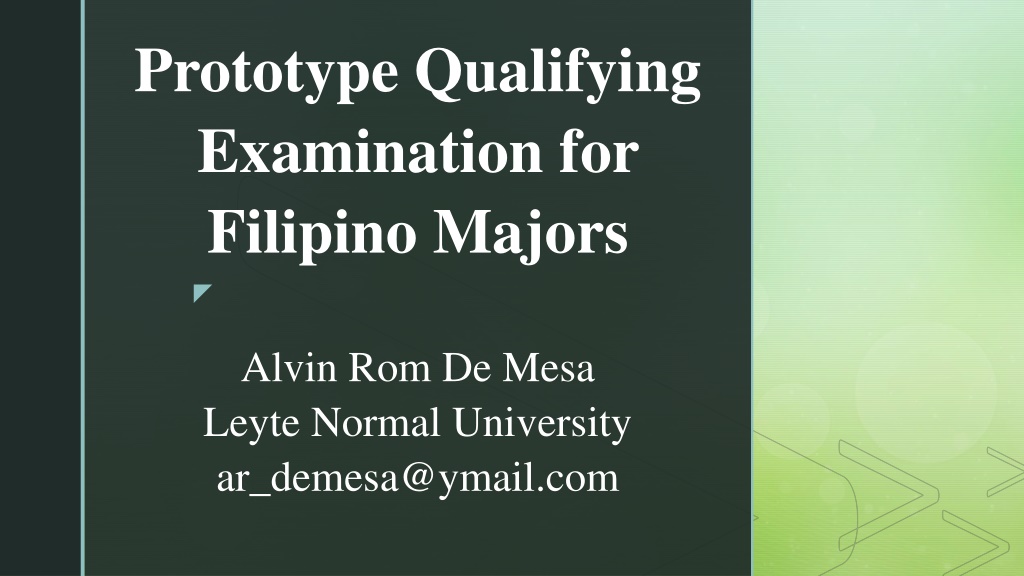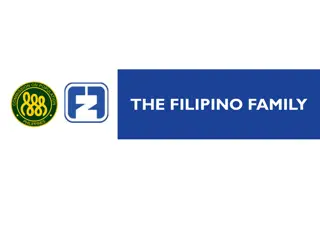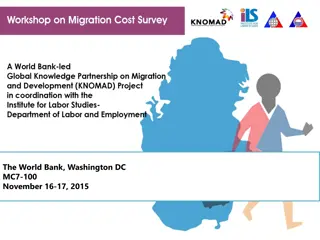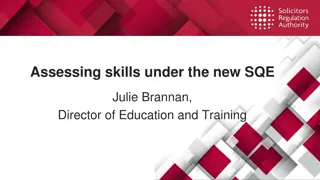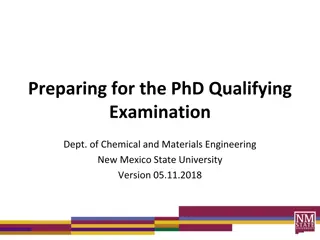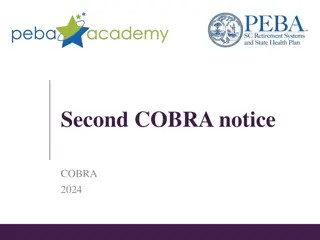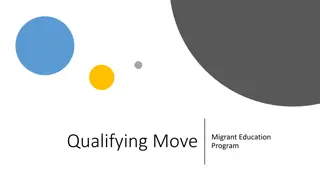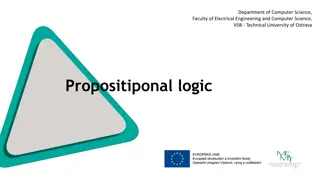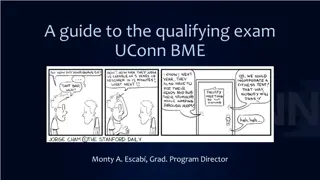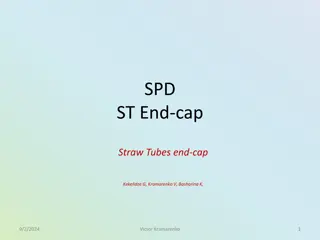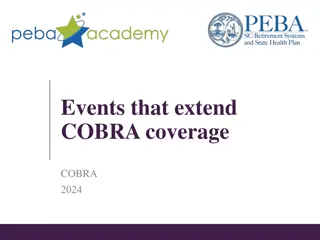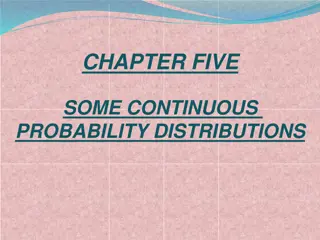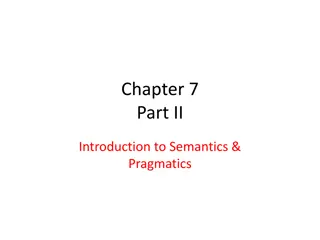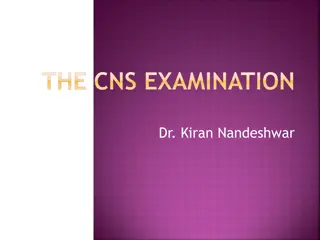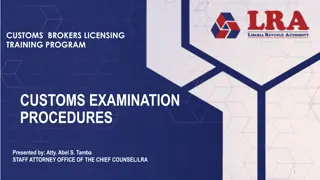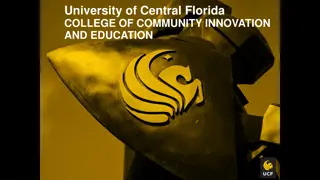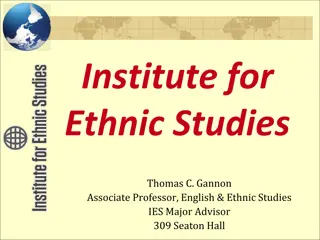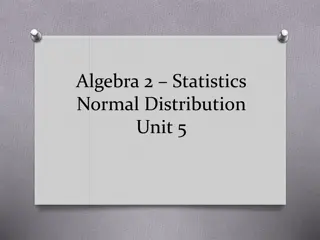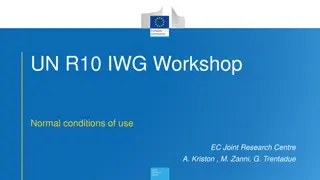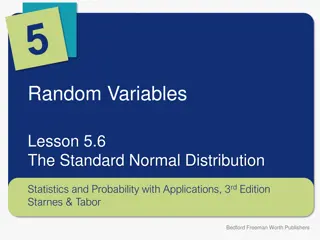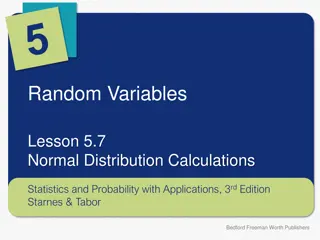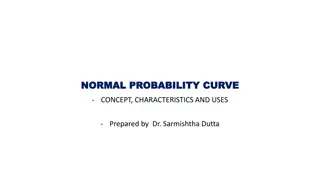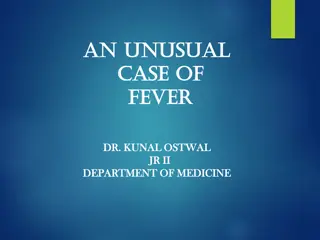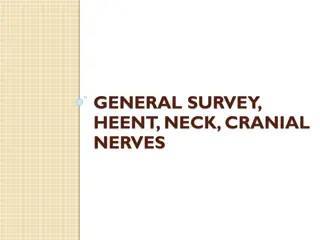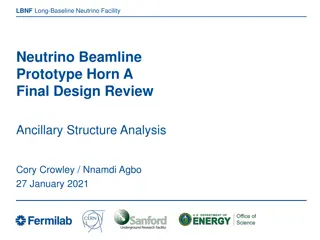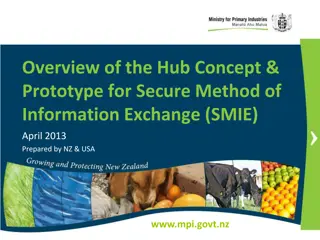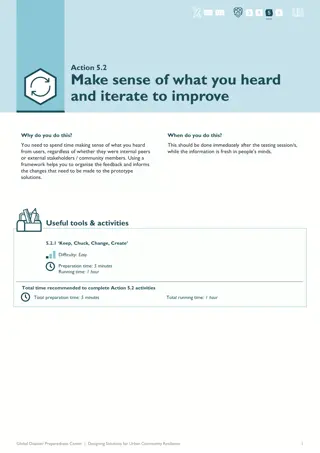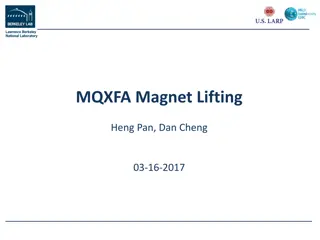Prototype Qualifying Examination for Filipino Majors at Leyte Normal University
Selecting competent Filipino teachers for the future is crucial, and the Bachelor of Secondary Education program at Leyte Normal University implements a qualifying examination for Filipino majors. This examination, along with an interview process, aims to assess the ability of students to succeed in the Filipino subject area. Overcoming challenges in creating validated examinations, a prototype test is utilized to identify suitable candidates. The study emphasizes the importance of effective testing programs in educational evaluation.
Download Presentation

Please find below an Image/Link to download the presentation.
The content on the website is provided AS IS for your information and personal use only. It may not be sold, licensed, or shared on other websites without obtaining consent from the author. Download presentation by click this link. If you encounter any issues during the download, it is possible that the publisher has removed the file from their server.
E N D
Presentation Transcript
Prototype Qualifying Examination for Filipino Majors Alvin Rom De Mesa Leyte Normal University ar_demesa@ymail.com
INTRODUCTION Selecting Filipino majors in the Bachelor of Secondary Education (BSEd) program needs some kind of evaluation in order to select competent Filipino teacher for the future. Testing is one of the evaluation measures commonly used in the different units at Leyte Normal University (LNU). Educators and administrators of the school are responsible to make education relevant to the needs of every citizen.
Oriondo and Antonio (1984), believe that test is the best tool in evaluation. Based on the results, the teachers know what skills they have focused in their instruction. According to Thorndike and Hagen (1961), a good test helps to motivate the interest of students in order to pass and to choose a particular subject as his major. Therefore, there is a need to have a qualifying examination to be given by the Filipino unit to those incoming first year college students who wish to major Filipino subject in the BSED program.
Although, the Filipino unit which is with the College of Arts and Sciences (CAS) found difficulty in making qualifying examination for aspiring Filipino majors because it takes time to make the said validated examination, they can use the protype qualifying examination made by the researcher aside from the College Admission Test (CAT) given by the university to those First-Year college applicants. The selection of the prospective Filipino majors will be done in two ways: a qualifying examination and an interview. Student applicants who passed in the qualifying examination are the ones who will be interviewed. This study assumes that one of the admission requirements for the Filipino majors is the qualifying examination will reveal the ability of students to achieve in the course as their major.
Furthermore, Brookhart & Nitko (2015) suggest that a good testing programs must be designed to cover as many important outcomes as possible. Test must be progressive, practical, economical, usable and flexible. It must also supplement rather than supplant the informal tests given by classroom teachers. In addition, Padua and Santos (1997) contend that standardized tests are norm-referenced tests which have been administered to a large group of potential users of the test. The process of standardization of a test could take a very long time before finally arriving at acceptable standardized test from the time that the test developer prepared the table of specifications up to the point of validation and testing. This was already proven by many researchers in which standardized test. their studies were about
METHODOLOGY This study followed a descriptive developmental research. It involves the development of the prototype qualifying examinations which followed the Product Developmental Cycle as suggested by Popham and Baker (1975). The steps are: Instructional Specifications; Test Item Validation; Product Development; Product Try-out; and, Product Revision. This study was conducted in selected private higher education institution in Samar and Leyte. On the first dry-run, the researcher used one school in Leyte represented by Asian Development Foundation College (ADFC) in Tacloban City and one respondent school in Samar represented by Samar College in Catbalogan, Samar. Both schools were chosen because they are under the supervision of the Commission on Higher Education (CHED). On the second dry- run, the respondent schools utilized were Leyte Colleges in Tacloban City and Saint Mary s College of Catbalogan, in Catbalogan Samar.
The instruments that were used in this study were based on the syllabi of the two basic General Education 122 (GE 122) and General Education 123 (GE 123) used by the instructors, table of specifications of the cognitive processes of the items for the constructed test items and 3-rating scale for determining face and content validation of the test. The number of students who took the test was taken from 20% of the population of Bachelor of Secondary Education (BSEd) sophomore students. Before administering the test, the researcher asked permission from the president/director of the said schools. The schools involved in this study are private schools which are not under State Colleges and universities (SUC s). The school chosen were two from Samar and from Leyte respectively.
RESULTS AND DISCUSSION On Qualifying Examinations the Content Validity of the Prototype Interpretation Very Satisfactory Criteria Mean 2.26 1. The items are based on the Filipino 101 now GE 122 and Filipino 102 now GE 123 2. The items present clear problems 3. The Correct responses are better than the other responses 4. The distractors are likely to attract mainly students of low achievement Combined Mean Very Satisfactory Very Satisfactory Very Satisfactory 2.24 2.39 2.54 2.36 Very Satisfactory
On the Face Validity of the Prototype Qualifying Examinations Interpretation Criteria Mean 1. The standardized qualifying examination is appropriate in terms of: Very Satisfactory a. Format 2.75 Very Satisfactory b. Page Lay-out 3.00 Very Satisfactory c. Language 2.75 Very Satisfactory 2. The items are clearly stated 2.50 Very Satisfactory 3. The words are clearly printed and legible 2.50 Very Satisfactory Very Satisfactory 4. The directions are concise and clear Combined Mean 2.75 2.71
On the Analysis of the Test Results - Out of 200 multiple choice items, only 148 items were included in the second dry-run. During item analysis, 66 items were revised and 54 items were rejected. First Dry-run was composed of 200 multiple choice items. This was conducted at Samar College of Catbalogan and at Leyte Colleges of Tacloban City. Second Dry-run. The researcher used 148 multiple choice items for second dry- run. This was conducted at Saint Mary s College of Catbalogan, and Asian Development Foundation College of Tacloban City.
Item Difficulty. Items that are easy, receive higher percentage than the difficult items. In this part, receives all items were analyzed. There were 7 items got 4.73% which interpreted as very easy with difficulty indices ranging from 85% and above. Ninety items or 60.81% are easy with difficulty indices ranging from 50% to 84%. A total of 49 items or 33.11% are difficult items ranging from 15% to 49%. Only 2 items or 1.35% are very difficult ranging from 0% to 14%. A total of 139 items are easy and difficult. This means that the test has an average difficulty.
Index of Discrimination. A good test items identifies good students from the poor students. The examinees in the upper 27% get more correct answers than the students in the lower 27% have more correct answers, the discrimination index is negative. The discrimination indices of the 148 multiple choice items were classified: 11 or 7.43% items classified as very good items, 94 or 63.51% fall under, marginal classifications, 23 or 15.54% considered as poor items, and 20 or 13.52% have negative indices. Effectiveness of Distractors. In a multiple-choice test, the option should be related or similar to one another. The distractors here are option which seem to correct but are not. In order to be functional, it must be attractive and acceptable to the examinees. The easiest item in the final form of the test had difficulty index of 0.64 interpreted as fairly easy. The most difficult items that has a difficulty index of 0.33 which is interpreted as fairly hard. While, the weighted average of the discrimination index is 0.49 which is fairly hard. Therefore, the final items are moderately difficult and the highest computed index of discrimination is 0.47 which means very good items.
Test Reliability. The reliability coefficient of the test was determined by using Kuder Richardson Formula 21 because it yields a coefficient of internal consistency. The value of the coefficient of reliability of the final form of the test was 0.86 which means the test is highly reliable. The Final Form of the Test. Based on the results of the item analysis, the final form of the test is composed of 105 multiple choice items. These items are arranged from easy to difficult.
CONCLUSION AND RECOMMENDATION Based on the findings of this study, the following conclusion were drawn: The constructed test has a balanced distribution as shown by the table of specifications, the Filipino expert teachers gave very satisfactory rating for the content and face validity of the qualifying examination, the final form of the test has easy and difficult items which belongs to a moderate difficulty level, and the test has high reliability. On the other hand, the following recommendation are advanced with the hope that the administrators of the Filipino unit will be considered for implementation: The Filipino unit of Leyte Normal University will use this test as an evaluation instrument for those aspiring Filipino majors, any qualifying examinations must be relevant to the present curriculum, a further study of this research is encouraged to establish the concurrent and predictive validity, and the future researchers may use this study for guidance in making a similar to this.
REFERENCES Adina, B. A. (1980). A prototype achievement test in mathematics for grade 3. Leyte State College, Tacloban City, Philippines: Unpublished Thesis. Agner, S. B. (1981). Towards the development of a communicative proficiency test in Pilipino for finishing elementary students: A first attempt. Philippine Normal College-Della Salle University Consortium: Unpublished Dissertation. Brookhart S. M. & Nitko. A. J. (2015). Educational assessment of students. 7th Edition. New Jersey: Pearson Education, Inc. Caharop, T. B. (1991). A test of communicative competence for freshmen college students. Leyte State College, Tacloban City, Philippines: Leyte State College. Downie, N. M. & Heath, R. W. (1974). Basic statistical methods. New York: Harper and Row Publishing, Co. Ebel, R. L. (1965). Measuring educational achievement. New Jersey: Prentice Hall, Inc. Furst, E. J. (1958). Constructing evaluation instrument. New York: David Mckay Company, Inc. Garett, H. (1965). Testing for teachers. 2nd Edition. New York: American Book Company. Klenowski, V. & Wyatt-Smith, C. (2014). Assessment for education (Standard, judgement and Moderation). New Delhi: SAGE Publication, Inc. Kubiszyn, T. & Borich G. (2007). Educational testing and measurement (classroom application and practice). 8th Edition. Australia: John Wiley & Sons, Inc. Lindemen, R. (1976). Educational measurement. Winsconsin: George Banta Publishing Co. Lumen, A. C. (1983). A standardized achievement test in mathematics for high school seniors in region 8. Devine Word University, Tacloban City, Philippines: Unpublished Dissertation. Oriondo, L. L. and Dallo-Antonio, E. M. (1984). Evaluating educational outcomes. Manila: Rex Printing Co., Inc. Padua, R. N. and Santos. (1997). Educational evaluating and measurement: Theory, practice and application. Quezon City, Philippines: Katha Publishing Co. Popham, J. W. and Baker, E. L. (1975). Educational evaluation. New Jersey: Prentice Hall, Inc. Sanchez, N. O. (1989). Admission requirements and other selected factors or predictors of academic achievements of the college of education students. University of the Philippines: Unpublished Dissertation. Thorndike, R. and Hagen, E. (1961). Measurement and evaluation in psychology and education. New York: John Willey and Sons, Inc.
